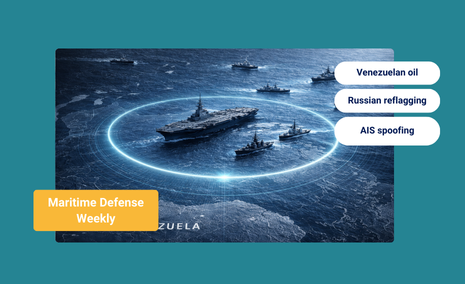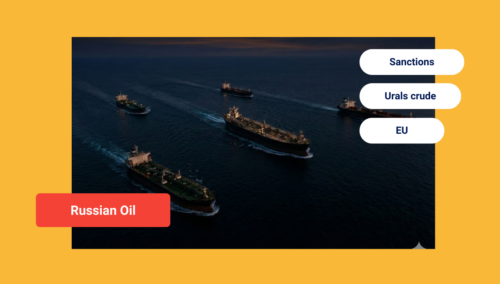Top 6 Geopolitical Disruptions – Q2 2025
What’s inside?
- Though slightly moderated, this trend observed in Q1 2025 persisted into Q2, reaching another record high in the number of sanctioned vessels since 2022 — encompassing both newly designated vessels and those already sanctioned by one regulator that have now been designated by additional regulators.
- Over 13,000 vessels globally were affected by GPS jamming incidents in Q2 2025.
- In Q2 2025, the average “jump” distance of vessels experiencing AIS jamming remained consistent with Q1 2025, at approximately 6,300 km.
- Windward’s dedicated GPS jamming team and analytical models identified three emerging jamming hotspots in Q2 2025:
- New areas! The Arabian Gulf and the Mediterranean Sea. From zero affected vessels in Q1, the numbers surged to over 4,300 and 1,000 vessels respectively in Q2.
- Q2 2025 saw a sharp increase in jamming activity in the Baltic Sea, with over 2,000 vessels affected – a 500% surge compared to Q1.
- Stretching from the Black Sea to the Gulf of Guinea, a jamming hub that first emerged in Q1 2025 continued to expand in Q2. Over 800 vessels were affected in the region — a 568% increase from the previous quarter.

Jamming patterns in the Baltic Sea during Q2 2025

GPS Jamming in the Arabian Gulf during Q2 2025
- AIS jamming in Q2 2025 triggered false signals near several sensitive terminals, including Asaluyeh, Bandar Abbas, and Dubai — raising operational and security concerns in these high-traffic areas.
- On June 22, GPS jamming activity peaked, with over 1,700 vessels affected in a single day.
- Unlike jamming disruptions in low-risk regions, the extensive interference near a high-risk regime like Iran had added consequences. It led to false port call signals in Iranian waters, complicating vessel screening processes and undermining due diligence efforts for stakeholders.
- 97% of jamming incidents in the Arabian Gulf “threw” vessels onto land, leading to a surge in false port calls in Iran and creating added challenges for compliance and due diligence.
- Rapid identification and removal of these false events was critical during the conflict, helping maintain operational resiliency and continuity across affected regions.

Cleared Risk






